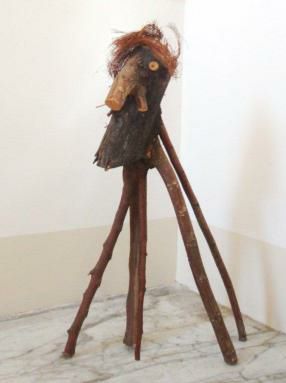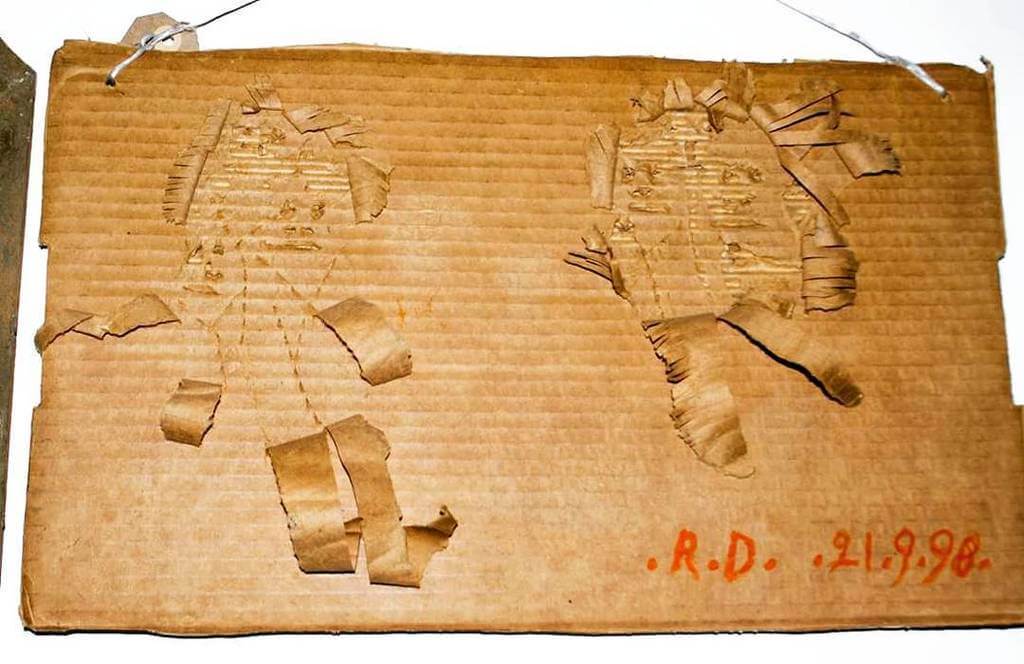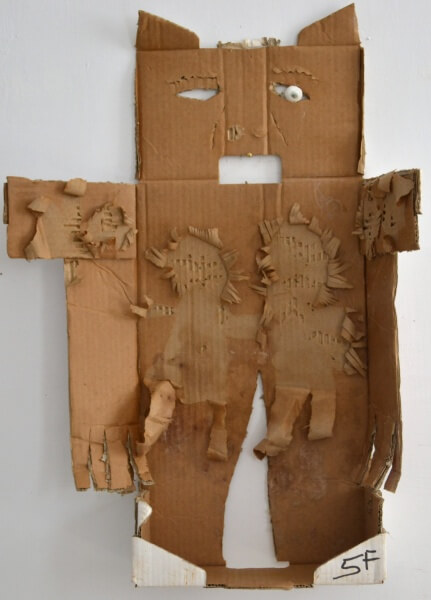
Davide Mansueto Raggio
Davide Mansueto Raggio was born in 1926 in Celesia San Colombano near Genoa from a farmer’s family. During the Second World War he lived an imprisonment experience that had deep consequences on him and originated his psychic troubles. Those troubles got worse during the period he spent in Argentina with his brother at the time of the Peron’s regime. In 1950 Raggio is involved in the events that lead to Peron’s fall and he is interned in a psychiatric prison from which his brother will manage to have him released one year later. Back to Italy Raggio shows growing symptoms of mental instability and will be recovered in the psychiatric hospital of Quarto (Genoa). Here he begins to paint and to collect roots and acorns by which he realizes necklaces and baskets. His real artistic awakening is due to the meeting with Claudio Costa in 1985; then on Raggio paints big wax crayons painting, builds big installations and interweaves roots, acorns and other material to realize the characters he calls the furies (le furie). He also starts the series of the Pinocchi: smaller and bigger characters that he makes out of bamboo canes, nuts and roots held together by a metallic spring that allows for a slight rocking of the figure. He also made extensive use of clay and of small pieces of brick glued together, referring to these as to “sasso matto” that is crazy stone, because it looks like stone but is friable and slips out of hands. He also use ashes from cigarettes that the pasted together with some glue; and became famous for his “wrenches”, small pieces of carton box from which he scratched the surfaces pulling out human and animals shapes. Raggio’s amazing and truly brut art describes a mythical and magical world charged with symbolic and archaic suggestions. He simply saw this world: in the node of a tree he could spot a nose, in its leaves he could find hands. He then put them together giving them new life. He died in 2002.
Most of his work was destroyed before his artistic genius was recognized; what is left can be found in the most important art brut galleries around the world, like the Losanna collection.


